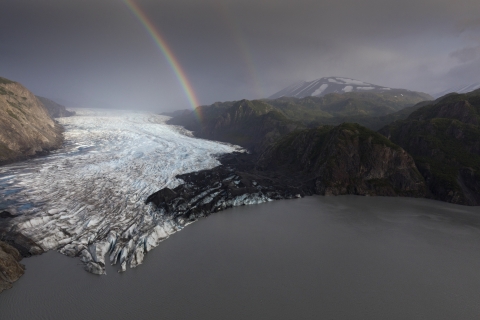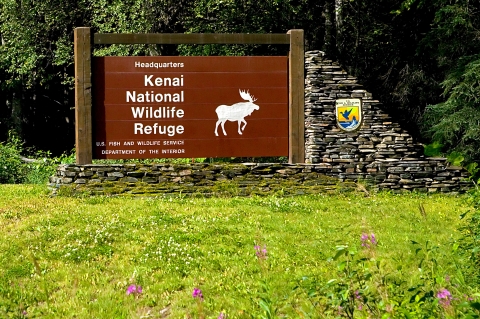About Us
The Dena’ina people call this special place “Yaghanen” - the good land. It's also known as the Kenai National Wildlife Refuge.
From ice fields and glaciers to tundra, forests, and coastal wetlands, the Kenai Refuge is often called “Alaska in miniature”. Biodiversity is unusually high for this latitude because of the juxtaposition of two biomes: Sitka spruce-dominated coastal rainforest and the western-most reach of boreal forest in North America. This refuge is known for its moose, brown and black bears, lynx, wolves, trumpeter swans, and more. The Kenai River, which originates in the refuge, is renowned for its wide variety of sport fish including Chinook (king), sockeye (red), and coho (silver) salmon, Dolly Varden and rainbow trout. This refuge, including the Kenai Wilderness, is an anchor for biodiversity on the Kenai Peninsula in a time of change - including development downstream, changing climatic conditions, and change through fire.
Our Mission
Our mission is for the Kenai National Wildlife Refuge to serve as an anchor for biodiversity on the Kenai Peninsula despite global climate change climate change
Climate change includes both global warming driven by human-induced emissions of greenhouse gases and the resulting large-scale shifts in weather patterns. Though there have been previous periods of climatic change, since the mid-20th century humans have had an unprecedented impact on Earth's climate system and caused change on a global scale.
Learn more about climate change , increasing development, and competing demands for refuge resources. Native wildlife and their habitats will find a secure place here, where refuge staff and partners work together, using the best science and technology available, to ensure that biological health is maximized and human impacts are minimized.
Visitors will feel welcomed and safe by means of a wide variety of wildlife-dependent recreation opportunities, facilities, and interpretive and educational programs that encourage informed and ethical use of the refuge’s natural resources. The refuge will achieve excellence in land, water, and Wilderness stewardship; and—with careful planning, forethought, and human determination—an enduring legacy of abundant plant, fish, and wildlife populations will be ensured for people to enjoy today and into the future for this phenomenal land we call “The Kenai.”
Refuge Purpose(s)
Each unit of the National Wildlife Refuge System is established to serve a statutory purpose that targets the conservation of native species dependent on its lands and waters. All activities on those acres are reviewed for compatibility with this statutory purpose.
The Alaska National Interest Lands Conservation Act established, and provided the following management purposes, for Kenai National Wildlife Refuge:
- conserve fish and wildlife populations and habitats in their natural diversity, including but not limited to, moose, bear, mountain goats, Dall sheep, wolves and other furbearers, salmonoids and other fish, waterfowl and other migratory and nonmigratory birds.
- fulfill the international treaty obligations of the United States with respect to fish and wildlife and their habitats;
- ensure, to the maximum extent practicable and in a manner consistent with the purposes set forth in paragraph (i), water quality and necessary water quantity within the refuge;
- provide in a manner consistent with subparagraphs (i) and (ii), opportunities for scientific research, interpretation, environmental education, and land management training; and
- provide, in a manner compatible with these purposes, opportunities for fish and wildlife-oriented recreation.
The Wilderness Act of 1964 provides the following purposes for Kenai Wilderness:
- secure an enduring resource of wilderness;
- protect and preserve the wilderness character of areas within the National Wilderness Preservation System; and
- administer [the areas] for the use and enjoyment of the American people in a way that will leave them unimpaired for future use and enjoyment as wilderness.
Our History
In 1941, President Roosevelt designated more than 1.7 million acres as the Kenai National Moose Range to protect the "giant, Kenai moose." In 1980, the Alaska National Interest Lands Conservation Act renamed and expanded the Moose Range to the Kenai National Wildlife Refuge, including the establishment of 1.32 million acres as Kenai Wilderness and expanded purposes. The refuge now exists to protect the variety of wildlife and their habitats and to promote scientific research, environmental education and recreation.



